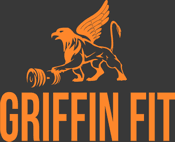Anterior pelvic tilt- what is tilting you?
by connor whittall in News

Anterior pelvic tilt is a change in posture that happens when the front of the pelvis rotates forward, and the back of the pelvis rises. Statistics show that a high prevalence of running sports such as football and rugby suffer constant tightness with the anterior (front) muscles surrounding the pelvis. Risk factors for the development of anterior pelvic tilt include:
• prolonged periods of sitting
• lack of physical activity
• poor posture
Because the muscles at the front are pulling the pelvis forwards, the posterior (back) muscles begin to lengthen and are put onto an eccentric stretch.
The hip flexor muscles:
• Iliacus and Psoas major muscles, also known as your iliopsoas.
• Rectus femoris, which is the deep quadriceps muscle
The hip extensors:
• Hamstrings; bicep femoris (lateral), semitendinosus (middle) and semimembranosus (medial)
• Glutes; Glutes Maximus and Medius
If the pelvis continues to move forwards, the lower back begins to become stiff and painful due to the posterior muscles being inactive.
However, its very easy to reverse the tilt by some simple things;
• Foam roll quadriceps, calfs, plantar fasica and glutes using lacrosse ball or foam roller
• Hip flexor stretch- increase range of motion (ROM)
• Banded clams- working glutes in a stable position
• Banded Monster walks- activating glute med in a functional linear fashion to stop internal rotation of hip
• Banded glute bridges- isometric 6 s hold, 10 s rest repeat 10 times
• Banded glute bridges- eccentric work trying to length the muscle 0-1-4 ratio
• 30-60 second plank- variations can be added depending on level of difficulty
Watch these videos to help with technique. Enjoy 😊
